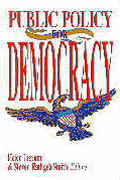A small but growing number of public sector organizations, particularly at the local government level, are adopting performance analytics as part of their management plans. Specifically, these local governments use evidence-driven analysis in their decisionmaking approaches to innovation throughout their organizations.
Performance analytics is the usage of statistical modeling, tools, and techniques to discover, understand, and communicate patterns within data. These practices can improve operational efficiency and effectiveness, reduce costs and redundancies, and lead to the adoption of innovative solutions to recalcitrant problems.
Unfortunately, most public sector organizations have only just begun using performance analytics and have been unable to capture and apply data successfully in the decisionmaking process. Not surprisingly, this has frustrated public sector managers who see the promise of performance analytics but have so far failed to realize its benefits.
Working with the Alliance for Innovation, we developed a comprehensive survey on performance analytics sent to 280 cities and counties. Our typology led us to analyze the use of performance analytics in four departments: police, public works, code compliance, and parks and recreation. Evidence of the use of performance analytics appear in all departments.
- In 2012 and 2013 the Philadelphia police department used performance analytics to identify at-risk neighborhoods and directed more patrols to those areas. This resulted in a 39 percent reduction in home burglaries across the city.
- A number of cities and counties in Massachusetts are transitioning to performance analytic-centric systems for tracking streets projects. This better enables the state government to understand the status of projects.
- Atlanta Fire and Code Compliance worked together to identify at-risk structures and were able to correctly predict 71 percent of structure fires. This enabled Code Compliance to better target for review those structures that were more likely to experience fires.
- In a recent survey, approximately 90 percent of parks and recreation departments call the importance of performance analytics as either high or very high in both strategic and day-to-day operational decisionmaking. They are increasingly using performance data for staffing and operations.
Performance analytics need organizational support
Organizational culture is a key factor that influences the collection and use of performance data. An organization’s management needs to consider if the internal culture is prepared to move to an evidence-based approach. Employees working in more innovative organizations that emphasize teamwork, cross-departmental collaboration, and risk-taking are more likely to view performance measures positively. Organizations where the internal culture does not value data and analysis for decisionmaking at the strategic and even tactical levels are less likely to benefit from performance analytics.
The temptation to throw technology at an analytics problem is overwhelming, and while technology is necessary to successfully undertake performance analytics, it is not sufficient to perform it. The more critical components of success—the people, processes and procedures—are more difficult to acquire and manage. We recommend that managers focus on the fundamentals rather than acquiring expensive technological solutions.
Use of performance analytics varies by department
While management and governance of analytics is certainly evident, it appears largely disparate and lacking a holistic approach. While we saw departmental staff involved, we were surprised to see how generally uninvolved information technology (IT) staff were in capturing and using performance analytics. Conversely, we were also surprised to see the relative lack of involvement by service departments in important topics such as data security and data privacy. A holistic approach to the management and governance of performance analytics requires coordination and collaboration between functional units and the IT units across a host of strategic issues.
We found that police departments tend to collect and analyze performance measure more frequently than the three other departments who responded to our survey. Police departments in our sample not only collected various performance measures but also collected benchmark data regularly. Police departments have had a long institutional history in crime statistics reporting and are asked to report on and track different performance metrics by a wide assortment of stakeholders at the federal, state, and local levels.
External pressure is necessary
The support and pressure provided by elected officials often plays a critical role in the adoption and use of performance metrics. When elected official show interest in the collection of performance analytics, public agencies are much more likely to collect and report data. Conversely, when elected officials show little enthusiasm for performance analytics, they are less likely to discuss data collection and analysis needs with department heads and are less likely to use performance analytics in organizational decisionmaking.
Support from elected officials is important given that the broader community is not enthusiastic about the use of performance analytics. Our survey respondents noted that community stakeholders such as citizens, local businesses, neighborhood leaders, and non-governmental organizations are not enthusiastic about the use of performance analytics by local governments. However, enthusiasm for the use of performance analytics within city departments is generally higher. We suspect that the lack of civil society enthusiasm for performance analytics stems from limited use in public decisionmaking, public reporting, and dissemination of success stories that demonstrate the power of analytics in addressing community problems and improving service delivery.
Local governments underestimate challenges and opportunities
Overall, respondents reported that their city and department generally promote a culture of innovation (e.g. promoting bottom-up innovation, anticipatory change, learning by doing). They also reported that they neither perceive negative consequences, such as budget cuts, nor positive consequences, such as monetary benefits and public recognition, from implementing performance analytics. While the lack of negative consequences is a relief, the lack of positive consequences is concerning.
While we were not surprised to find differences in the usage of and type of performance analytics by department, we were surprised by the significant differences within a city or county. For each city or county that we surveyed, we saw significant differences by department in the areas of usage, the type of performance measures collected, and the factors that predict the successful application of measures within each department. Clearly, there is no “one-size-fits-all” strategy for departments within an organization. In their zeal to join the performance analytics movement, organizations should examine carefully the capacity, regulatory, and cultural differences among departments and develop context-sensitive strategies that help all departments advance over time.
The Brookings Institution is committed to quality, independence, and impact.
We are supported by a diverse array of funders. In line with our values and policies, each Brookings publication represents the sole views of its author(s).












Commentary
Using performance analytics in local government
November 30, 2017